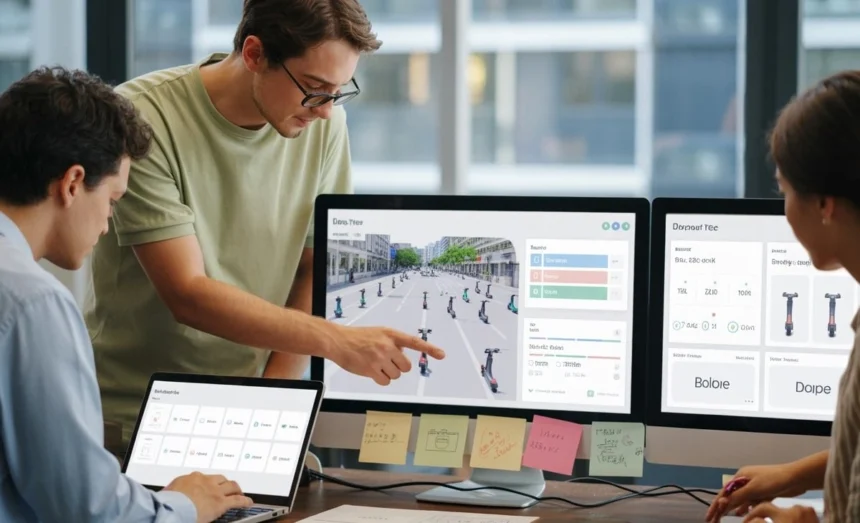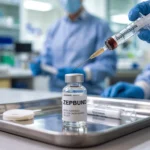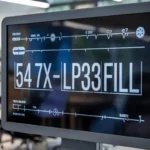Launching an e-scooter business is exciting, but scaling it successfully requires more than just a fleet of sleek scooters. You need a reliable, intuitive, and data-driven app that connects riders, operators, and the ground reality in real time. That’s where finding the right e-scooter app development company becomes crucial.
The global e-scooter market is booming—worth over $40 billion in 2024 and growing as cities worldwide embrace sustainable micro-mobility solutions. As the competition intensifies, the quality of your mobile app can significantly impact user adoption, operational efficiency, and long-term ROI.
In this blog, we’ll walk you through how to choose the best app development company for your e-scooter business—what to look for, how to evaluate vendors, and what to expect in terms of features, cost, and post-launch support.
Why Choosing the Right Partner Matters
Building an app for an e-scooter business isn’t just about a pretty UI. You need real-time vehicle telemetry, fleet management, payments & wallet flows, user routing and geofencing, remote unlocking, and strong safety & compliance features. A bad choice costs money, slows launch, and hurts rider trust.
Shared e-scooter ridership also rebounded recently — for example, e-scooter trips in North America rose sharply, helping shared micro mobility reach record ridership in 2024.
With those market tailwinds, your app must be robust from day one — here’s how to choose the company that will build it right.
#1 Define Your Product and Technical Must-Haves
Start by turning business goals into a minimum viable product (MVP) spec. This helps you compare vendors on a like-for-like basis and avoids scope creep.
Product questions to answer first
- What business model? (dockless, docked, subscription, B2B/B2C)
- Which user flows are essential at launch? (ride booking, unlocking, payments, support, pass/subscription)
- Hardware integration: Do you have a telematics vendor or need the company to integrate with a choice of controller/IoT device?
- Regulations & geo: which cities/countries and their compliance needs (parking rules, speed limits, geofences)?
Technical must-haves checklist
- Real-time vehicle telemetry and heartbeat monitoring.
- Secure wallet / PCI-compliant payments.
- Offline-capable mobile app for intermittent networks.
- Scalable backend (microservices or cloud-native) and clear SLAs.
- Admin dashboards for fleet ops, analytics, and remote device control.
Once you have this spec, use it to shortlist vendors and avoid “feature theater” conversations.
#2 How to Shortlist Vendors (Experience, Stack, and Domain Knowledge)
Not every dev shop fits micromobility. Look for companies with both transport/mobility experience and strong mobile + IoT capabilities.
What to ask about experience
- Do they have previous scooter, bike-share, logistics, or EV projects?
- Can they show shipped apps in stores and admin portals in production?
- References: speak with at least one former client about post-launch support and uptime.
Tech stack & architecture questions
- Native vs cross-platform: what do they recommend for performance and hardware integration? (Native iOS + Android often performs better for hardware/low-latency tasks.)
- Backend: Do they use event-driven or real-time stacks? How do they handle scaling during high-peak usage?
- Data & analytics: can they deliver operational dashboards and exportable telemetry data?
Tip: ask for architecture diagrams and a one-page runbook for incident response — this reveals maturity.
After technical fit, evaluate commercial fit and team structure.
#3: Team Structure, Delivery Model, and Post-Launch Support
The right delivery model prevents surprises. You want clear ownership for mobile, backend, hardware integration, QA, and DevOps — plus a plan for post-launch ops.
Team you’ll want to see
- Product manager with mobility experience.
- Mobile engineers (iOS + Android).
- Backend engineers experienced with real-time telemetry and maps.
- DevOps / SRE for deployment and monitoring.
- QA with device-lab and automated test coverage.
- Data analyst for operational insights.
Delivery & engagement model
- Agile cadence: bi-weekly sprints with demos and backlog grooming.
- Fixed-price vs time-and-materials: choose fixed-price only for very well-scoped MVPs; otherwise, prefer T&M with capped monthly budgets.
- SLAs and incident response: 24/7 on-call? Response time targets? Uptime guarantees?
Post-launch operations
- Will the company provide a dedicated support retainer for bug fixes and feature parity?
- Who owns ongoing costs for servers, maps, push notifications, and third-party APIs?
- Roadmap governance: how do you request and prioritize features after launch?
Next, vet for non-technical but mission-critical qualities like security, compliance, and cost transparency.
#4: Security, Compliance, and Operational Readiness
Safety and compliance are non-negotiable for micromobility. Your vendor must help you mitigate risk and prepare operational playbooks.
Security & privacy
- Encryption of telemetry and user data in transit and at rest.
- Secure device pairing and anti-tamper measures.
- PCI DSS compliance or use of a PCI-compliant payments provider.
Regulatory & city operations
- Geofencing, speed limits, and dynamic pricing per city.
- Integration with city operator portals or permitting systems (if required).
- Localization: language, currency, and local payment methods.
Operational readiness
- Incident playbooks (e.g., scooter recall, mass battery issue).
- Remote firmware update capability and rollback safety.
- Field ops tools for rebalancing, maintenance workflows, and ticketing.
Last practical block — cost, timelines, and negotiation tips.
#5: Pricing Expectations, Timelines, and Negotiation Tips
Build a realistic budget and timeline. Knowing typical cost drivers helps you negotiate without sacrificing quality.
Typical cost drivers
- Integrations (telematics, payment gateways, and mapping license).
- Native mobile vs cross-platform decisions.
- Real-time backend and high-availability architecture.
- QA on-device matrix and regulatory testing.
Rough timeline (MVP)
- Discovery & spec: 2–4 weeks.
- Design & prototyping: 3–6 weeks.
- Development (MVP): 12–20 weeks.
- Pilot & local approvals: 4–8 weeks (variable by city).
Negotiation tips
- Break project into phases (MVP → city rollouts → scaling features).
- Include performance milestones and acceptance tests in contracts.
- Keep a 15–20% contingency for device/firmware surprises.
- Negotiate a support retainer for post-launch hotfixes and SLA guarantees.
Next, you have a final checklist and closing advice.
Quick Vendor-Evaluation Checklist (Printable)
- Has built at least one shared-mobility or EV project.
- Demonstrable native mobile + backend experience.
- Real-time telemetry + geofencing implemented.
- PCI-compliant payments or recommended partner.
- Offers DevOps and post-launch support retainer.
- Provides architecture diagram + runbook.
- Transparent pricing & delivery milestones.
Final Thoughts — How to Pick, Fast
Suppose you want one simple decision rule: prioritize domain experience over the lowest bid. An app that fails at scale or on the street costs more than hiring a more experienced team up front. Use the spec you wrote in Step 1 to run a three-vendor RFP, ask for a technical deep-dive, and pilot in one city before scaling.
The micromobility market is growing fast (global micro-mobility market ~USD 40.6B in 2024), and shared e-scooter usage is on the rise in many regions — now is a great time to launch, but only if your tech partner can handle the unique demands of scooters, fleets, and local operations.







